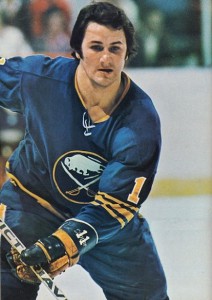Even though we are in the midst of an NHL season, fans of the Buffalo Sabres find themselves thinking more about lottery balls than hockey pucks. That’s because the team is destined for a top draft pick as it clings to the basement floor of the standings. However, this won’t be the first time that luck – which Buffalo sports franchises never seem to have on their side – will dramatically shape the future of the organization.
Lucky Number 11
Many Sabres fans would argue the franchise suffers from misfortune, citing the infamous “No Goal” incident in the 1999 Stanley Cup Finals and the injury depleted blue line of the 2005 Eastern Conference Finals. However, this wasn’t always the case. In fact, it was just the opposite at the franchise’s inception.

Heading into the 1970 NHL Draft, Montreal Junior Canadiens forward Gilbert Perreault was the consensus number one pick. What wasn’t certain was where the Francophone phenom would be playing. Along with the Sabres, the Vancouver Canucks made up the NHL class of 1970 and therefore would vie for the number one draft pick via a lottery being held in the Grand Salon of the Queen Elizabeth Hotel in Montreal.
The lottery was conducted with what resembled a roulette wheel that featured slabs numbered 1-13. Sabres Head Coach Punch Imlach selected to go with numbers 8-13 because 11 was his lucky number. That left Vancouver with number 1-6; consequently, it would be deemed a wash if the wheel landed on No. 7.
The wheel was spun, stopped on No. 1, and the Canucks rejoiced as the league congratulated them on securing the top pick. Among all of the hoopla, Imlach vehemently urged that the wheel be given a second look. Upon further review, it was discovered that the pointer actually landed on No. 11.
And that’s how the Sabres landed arguably the best player in franchise history.
The Sidney Crosby Sweepstakes
The second most important lottery unfortunately wasn’t as successful. The 2005 draft was met with an unprecedented circumstance. The previous season was wiped out because of a 310-day lockout meaning that there were no standings from the previous season to base the draft lottery on, all the while a once in a generation talent in Sidney Crosby was on the verge of breaking into the league.

The NHL’s solution was to have a 30-team drawing to determine who’d get the first-overall pick and the right to draft Crosby. Each team would have three balls in the lottery drum, minus one ball for every year in the previous three they had either made the playoffs or been awarded the first overall selection.
Four teams – the Pittsburgh Penguins, Columbus Blue Jackets, New York Rangers and the Sabres – had the greatest chance of receiving the first overall pick at 6.3%, by not qualifying for the playoffs or holding the first-overall pick in the last three seasons.
48 balls were placed in a lottery machine. The first ball selected had been assigned to the Penguins, giving them the first pick and forever changing the course of their franchise. The Sabres wound up with the 13th pick and drafted Marek Zagrapan who failed to play a single game in the NHL.
The only other time the Sabres held the first-overall pick was in 1987 when they drafted Pierre Turgeon. Turgeon went on to tally over 1300 points in the NHL and was the centerpiece of the trade with the New York Islanders that brought Pat LaFontaine to Buffalo.
With the team currently sitting in last place, they have the greatest chance of obtaining the 2014 first pick and in being in the midst of what’s considered to be a long rebuild, the team could once again be flirting with the first pick in 2015, when Canadian-boy-wonder Connor McDavid will be draft eligible.
The future of the Sabres franchise may not rest on the shoulders of any player, coach or member of front office management, but on a single lottery ball.